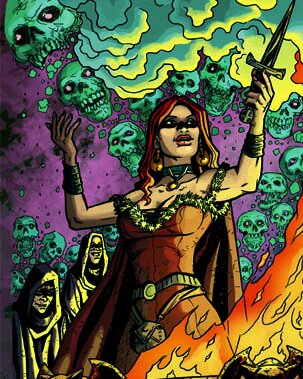Lady Macbeth's Breasts (SFW - honest!)
We're a week away from the release of the new JULIET trade to bookstores, and to help celebrate that we have something cool for you Shakespeare academics.Michelle Ephraim, who was one of the scholars who helped to put together our Backstage Edition has thoughtfully provided us with a copy of a Kill Shakespeare inspired essay, entitled, rather provocatively: Lady Macbeth's BreastsMichelle talks in her piece about the role that sexuality plays in the depictions of Lady M, both in our comic, and in culture as a whole. It's a funny, thought-provoking and insightful take on one of my favourite characters in the canon, as well as one that gives us a pat on the back for having Lady M transcend her "femme fatale" tropes (yay, us!).It's a short and enjoyable read - and you can go here to get in on the fun!Or if you'd rather just read the whole thing now i'ts here below: Lady Macbeth’s Breasts Before venturing into the influential (and notoriously censorious) Texas library market, the Kill Shakespeare team took some professional advice and gave Lady Macbeth’s ample breasts a bit of a nip/tuck. Especially to the “side boob” swelling out from the periphery of her metal tank top. Even with this strategic augmentation, Lady Macbeth’s breasts are a formidable presence in KS. And even more than her signature props—daggers, poison, wine—the breasts are Lady Macbeth’s most defining accessory. At the end of Issue #6 (also the concluding chapter of Kill Shakespeare: Volume 1), Lady Macbeth is serving up plenty of wine and cleavage to her obsequious paramour, Iago. (You can practically hear him panting.) Issue #7, with which Kill Shakespeare: Volume 2 begins, picks up with the same tableau of booze and breasts, establishing the latter as a key visual and symbolic theme in KS’s grand design. These prominent breasts seem appropriate given Kill Shakespeare’s literary context. In Shakespeare, Lady Macbeth’s most famous speech, her furious response to Macbeth when he tries to renege on their plan to murder King Duncan, concerns this part of her anatomy: I have given suck, and knowHow tender ’tis to love the babe that milks me.I would, while it was smiling in my face,Have plucked my nipple from his boneless gumsAnd dashed the brains out, had I so sworn as youHave done to this. (1.7) The speech has launched many an academic publication on Lady Macbeth’s maternal history. Did she give birth? What happened to the kid? Regardless of the true story of little Macbeth, her anecdote is meant as a testimony to her toughness, her refusal to wuss out of any promise. Ultimately and ironically in Act I of Macbeth, Lady Macbeth cites the female breast to articulate her strong masculine attributes and, by contrast, her husband’s weak, feminine nature. We hear her plea to be rid of any and all nurturing attributes: “Come you spirits/Unsex me now, and take my milk for gall.” Just in the highly unlikely case there’s a residual drop of motherly compassion. But her real concern lies with her husband who’s “too full of the milk of human kindness.” Whereas she’s manned-up to the task of killing the king and usurping the throne, Macbeth has not; she must bully him into it. To this end, Lady Macbeth shames her husband: if he refuses the chance to kill Duncan he is unmanly, but if he takes this opportunity he will be “so much more the man.” Shakespeare’s Lady Macbeth demonstrates her feminine side by the end of the play, but it’s not a pretty sight. Senseless, sleepwalking, and suicidal, she embodies what contemporary medical discourse would have identified as textbook female hysteria. Modern American psychiatrist Isador Henry Coriat in his 1912 book The Hysteria of Lady Macbeth goes to town with this interpretative tradition: “Lady Macbeth is a typical case of hysteria; her ambition is merely a sublimation of a repressed sexual impulse, the desire for a child based upon the memory of a child long since dead” (28-9). KS, however, clears Lady Macbeth of any trace of maternal trauma or desire. She’s homicidal, not hysterical. She’s characterized by malevolence, not madness.[1] In gaining and maintaining the Scottish throne, she also succeeds where her Shakespearean prototype fails, but this is hardly enough for her. And unlike Shakespeare’s Lady Macbeth, she doesn’t rely on her husband to get what she wants; she simply rids herself of Macbeth, a nuisance of a husband and an obstacle to her own political ambitions. In fact, KS’s Scottish Queen doesn’t give her husband much thought at all. It’s Iago who comments on their inverted gender roles: “[Lady Macbeth] has none of the soft parts of her husband.” No soft parts, indeed. Those impressively pneumatic breasts are definitely not filled with milk, not even a drop of it. Instead of milk, she’s full of the sinister liquids of liquor and poison, which she administers without a trace of human kindness. Lady Macbeth’s breasts in KS might be seen as inflated, metaphorically, with her voracious ambition. Appropriately, they are also her most formidable weapon, insuring her husband’s lusty oblivion as she straddles him in bed . . . and murders him. Instead of drinking the “nectar” between her legs as he happily expects, he gets poison thrust down his throat. As Lady Macbeth forces her liquid into him with her phallic vial, she is so much more the man. Like the stage and film productions that have depicted Lady Macbeth erotically, KS emphasizes a connection between a woman’s verbal and sexual aggressiveness. In the Renaissance, the oft-open mouth of a woman who talked excessively or forcefully was thought to have an analogous “openness” in her nether regions as well. In KS, Lady Macbeth’s skill at verbal manipulation hooks not only her husband, but Iago and King Richard II. In bed, she and Richard spar with “wit”--a word that for Shakespeare’s audience would have a double entendre as genitalia. Like their battle of wits, their competition for Shakespeare’s quill, an object with clear phallic symbolism throughout KS, is ultimately a fight for sexual and political domination. The most audacious adaptation of Lady Macbeth’s character in KS, more than her inspired cup size, is her new identity as a bona fide witch. Her magical cred supersedes that of the incanting Weird Sisters who submissively mumble their toil and troubles in her shadow.No matter how many Shakespearean scholars have argued for their similarities in Macbeth, there is no evidence that Shakespeare’s Lady Macbeth knows the three Weird Sisters, save for Macbeth’s mention of them. In Shakespeare’s tragedy, all four ladies may take gratification in controlling Macbeth, but only the witches have true agency; as she discovers, Lady Macbeth is just a poor player strutting and fretting her way to a really crappy fate. By promoting Lady Macbeth to witch status, KS ups the ante of the threat she poses to Macbeth, to Shakespeare, and, if we think about King James’ influential 1597 treatise on witchcraft, Demonologie, to the world of men in general. Richard is warned that she is “bewitching” and to “stay safe from her spells,” but he counters that she is merely his “possession, nothing more.” Nothing more, Richard? Are you sure about that? Shakespeare’s witches are sexual deviants who gets their kicks from screwing with men. Maybe from literally screwing them, too. They brag about removing a sailor’s thumb, a castration narrative KS evokes in Lady Macbeth’s fantasy of snatching the quill from Shakespeare. A well-endowed caricature of a Sexy Woman, Lady Macbeth would evoke a grotesque and subversive (and transgendered?) figure should she gain possession of the phallic quill, that penile appendage. With the quill, she would, as she declares to Richard, be “crowned king of this infinite space.” In Demonologie, King James’ deep paranoia about his subjects’ loyalty is on full display. He writes that women are susceptible to becoming “entrapped” by the “gross snares of the Devil” because they are weak, frail, disloyal creatures by nature. Once they become witches, the devil’s servants, they will launch a sexual and thus, political assault on every man they can get their hands on. Witches, he argues, have the power to:“[weaken] the nature of some men, to make them unable for women.” Unlike the bearded ugly witches in Shakespeare’s play, the extreme sexuality and physical beauty of KS’s Lady Macbeth only underscores, by contrast, the potentially sterilizing, castrating, and generally emasculating effects she has on men. What would King James make of her controlling the dagger that flies around trying to stab Hamlet and Shakespeare? Like the phallic vial of poison, the dagger is a weapon that is both physically and ideologically threatening in its symbolic usurpation of phallic power. It’s easy (and pleasurable) to imagine King James quaking with anger and pointing a shaky finger at this comic book Lady Macbeth. “See?,” he would mutter through clenched teeth, “I told you so!” At the end of Issue #12, after the big fight scene, Lady Macbeth disappears in a puff of magic smoke. It’s her own version of “I’ll be BAAACK.” Suddenly, that visually arresting eye candy of a body is gone, and we are left with . . . well, with eyes. Her eyes, staring out at us from the page. There is no body here, no breasts. Yet their gapingly absent presence is as much of a threat as they are, in all their gloriously visible cleavage, to the horny Iago. Shakespeare’s suicidal Scottish Queen becomes undone by her physicality—she just can’t seem to get that damn spot off her little hand. Not to mention the trauma of that lost child, the pet theory of Coriat and other psychoanalytic critics. There’s nothing little about Lady Macbeth’s character in Kill Shakespeare, but her enormous breasts, and perhaps her entire body itself, is a ruse. As the disembodied eyes suggest, she maintains a purely utilitarian relationship with her own body. Her real power isn’t her well-endowed physique but rather her ability to deploy it and collapse it. In this sense, her magic allows her to transcend the physical body, freeing her from the matters of flesh and blood—such as the prophecy of Banquo’s children who will succeed the childless Macbeths—that sunk her sixteenth-century prototype. Michelle EphraimAssociate Professor of EnglishWorcester Polytechnic Institute
In Shakespeare, Lady Macbeth betrays a soft spot early on: she says she won’t kill King Duncan because he resembles her father. On the other hand, a reader could imagine
KS
’s Lady Macbeth nonchalantly offing a family member should she get the chance.
WHAT A RIDE!
Finally....Wow. What a ride that was. The path to get Juliet from our brain to your eyes has been a far crazier and more rewarding one than I could ever have imagined.We sent off the final issue to the Printer's this Friday -- almost a full year after the first pages were drawn. If you had told me it was going to take us a YEAR to get four issues done -- I would have laughed in your face. No WAY. The book was totally written by November, this thing was going to go off without a hitch.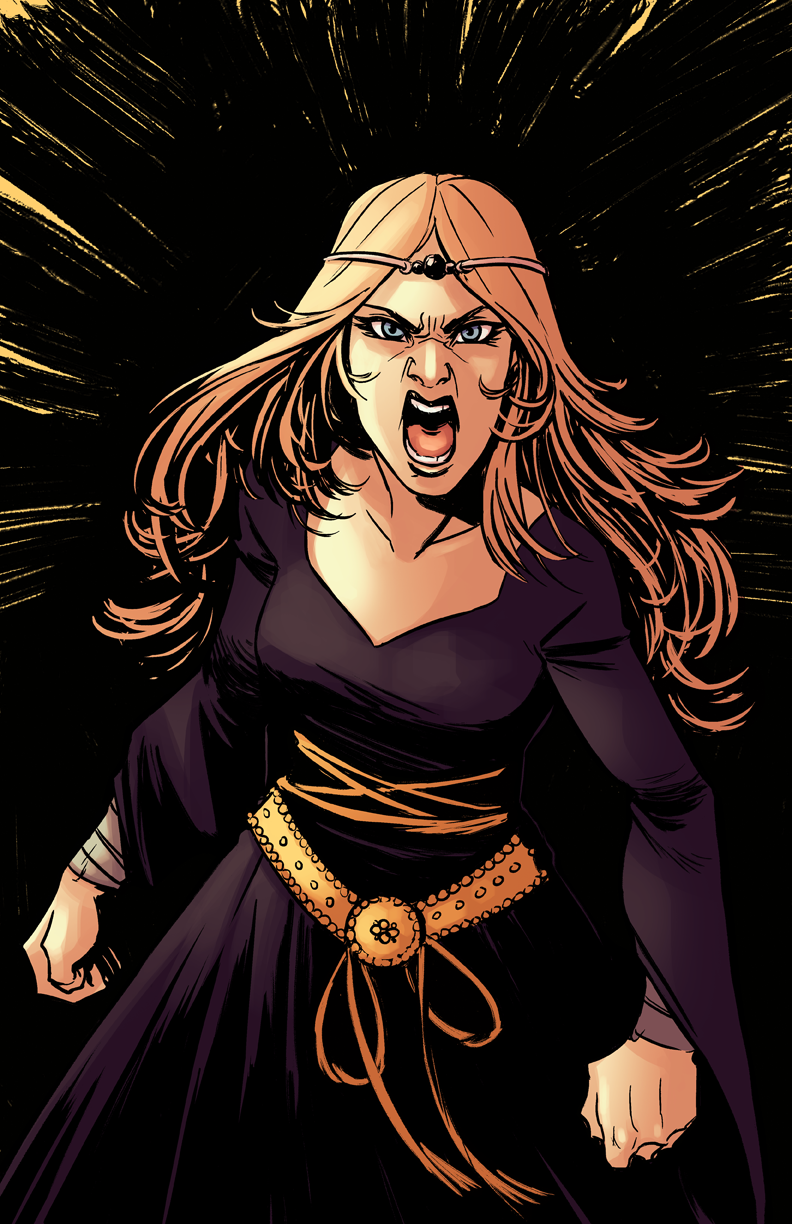 Ha. What was that they say about "best laid plans....?"Somehow, in-between that first page and last Friday, there's been numerous family illnesses, two floods, one team member who had to leave, a busted up car, more trips to Cons than I can count, and 100 pages (And counting - don't worry, we have a bad-ass back-up story for the trade) of the best work we've done on Kill Shakespeare so far.I want to thank Corin Howell, our incredible inker and penciler who had to juggle the family illness, the busted up car and one of the floods alongside the on-going work she's been doing for BOOM! and IDW AND the incredible stuff she's done for us. Corin, you're ability to nail all the biggest emotional moments, the beautiful backgrounds you've littered the book with, and your good nature and amazing laugh have made this journey a pleasure. KS will ALWAYS miss Andy Belanger, but you've proven to be more than worthy of being his successor.
Ha. What was that they say about "best laid plans....?"Somehow, in-between that first page and last Friday, there's been numerous family illnesses, two floods, one team member who had to leave, a busted up car, more trips to Cons than I can count, and 100 pages (And counting - don't worry, we have a bad-ass back-up story for the trade) of the best work we've done on Kill Shakespeare so far.I want to thank Corin Howell, our incredible inker and penciler who had to juggle the family illness, the busted up car and one of the floods alongside the on-going work she's been doing for BOOM! and IDW AND the incredible stuff she's done for us. Corin, you're ability to nail all the biggest emotional moments, the beautiful backgrounds you've littered the book with, and your good nature and amazing laugh have made this journey a pleasure. KS will ALWAYS miss Andy Belanger, but you've proven to be more than worthy of being his successor.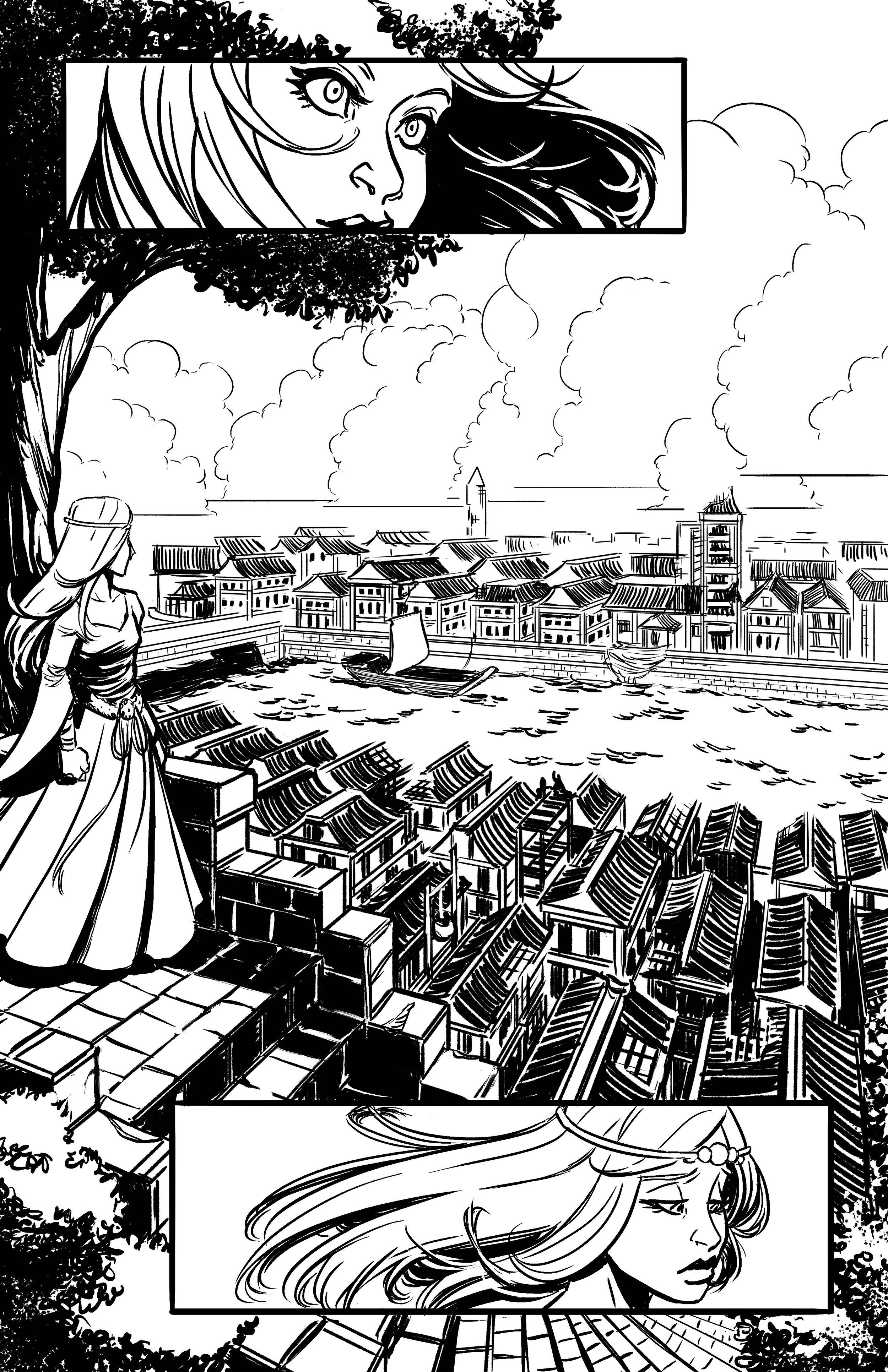 Alex Lillie and Shari Chankahamma -- what a tag team. We'd worked with Shari before on Tide and Mask, and so I was SO excited when we got her back for Juliet, and then SO devastated when we lost her half-way through to a dream opportunity that she HAD to say yes too.
Alex Lillie and Shari Chankahamma -- what a tag team. We'd worked with Shari before on Tide and Mask, and so I was SO excited when we got her back for Juliet, and then SO devastated when we lost her half-way through to a dream opportunity that she HAD to say yes too.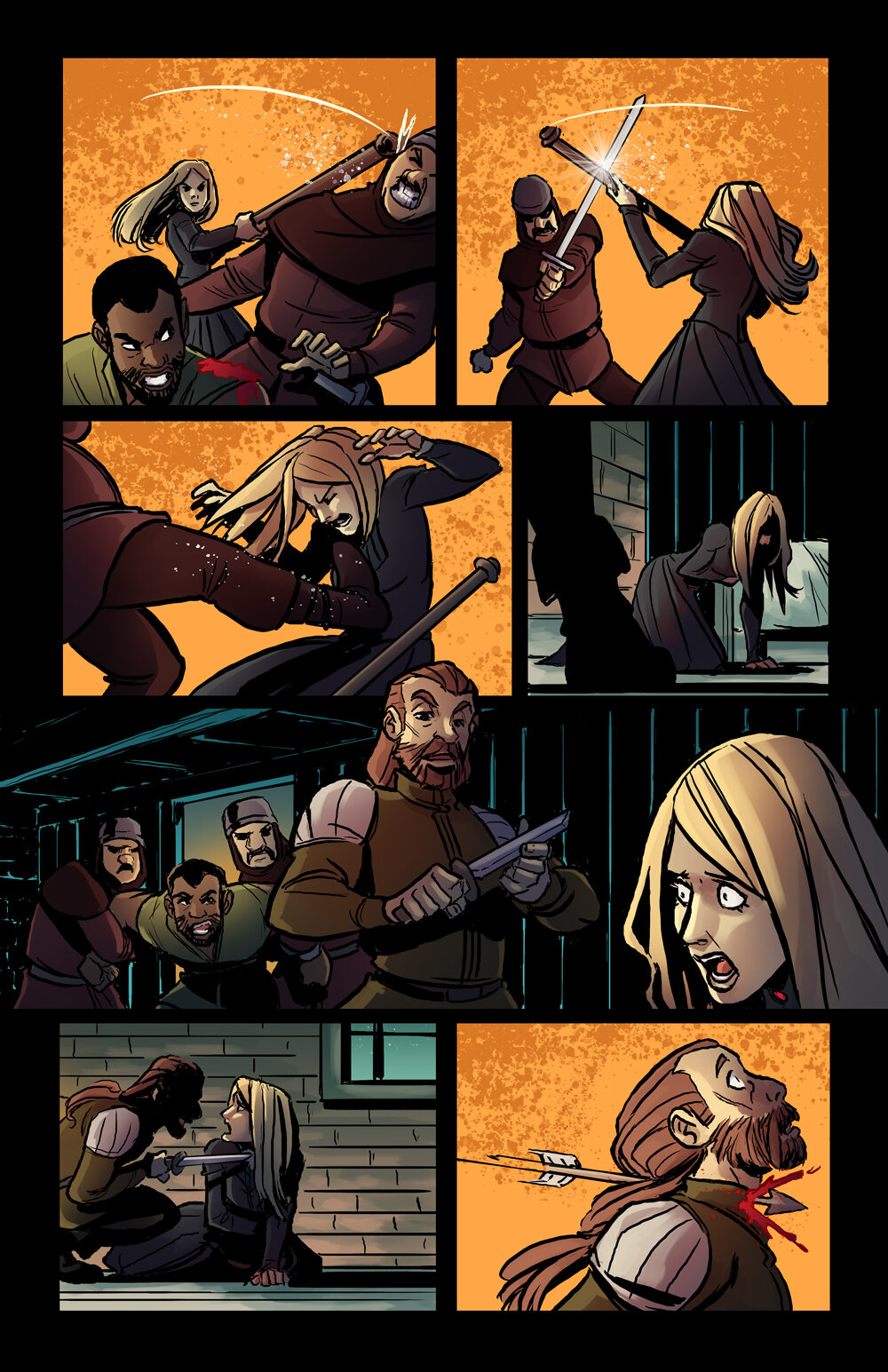 Into the void stepped Alex. You can't possibly believe this, but this is ALEX'S FIRST MAJOR COLOURING JOB IN COMICS!!! To be thrown into a series that has the depth of mythology as KS, and halfway into a book, is incredibly hard, yet Alex was amazing. I think you'll agree that hers was an incredible rookie season.
Into the void stepped Alex. You can't possibly believe this, but this is ALEX'S FIRST MAJOR COLOURING JOB IN COMICS!!! To be thrown into a series that has the depth of mythology as KS, and halfway into a book, is incredibly hard, yet Alex was amazing. I think you'll agree that hers was an incredible rookie season.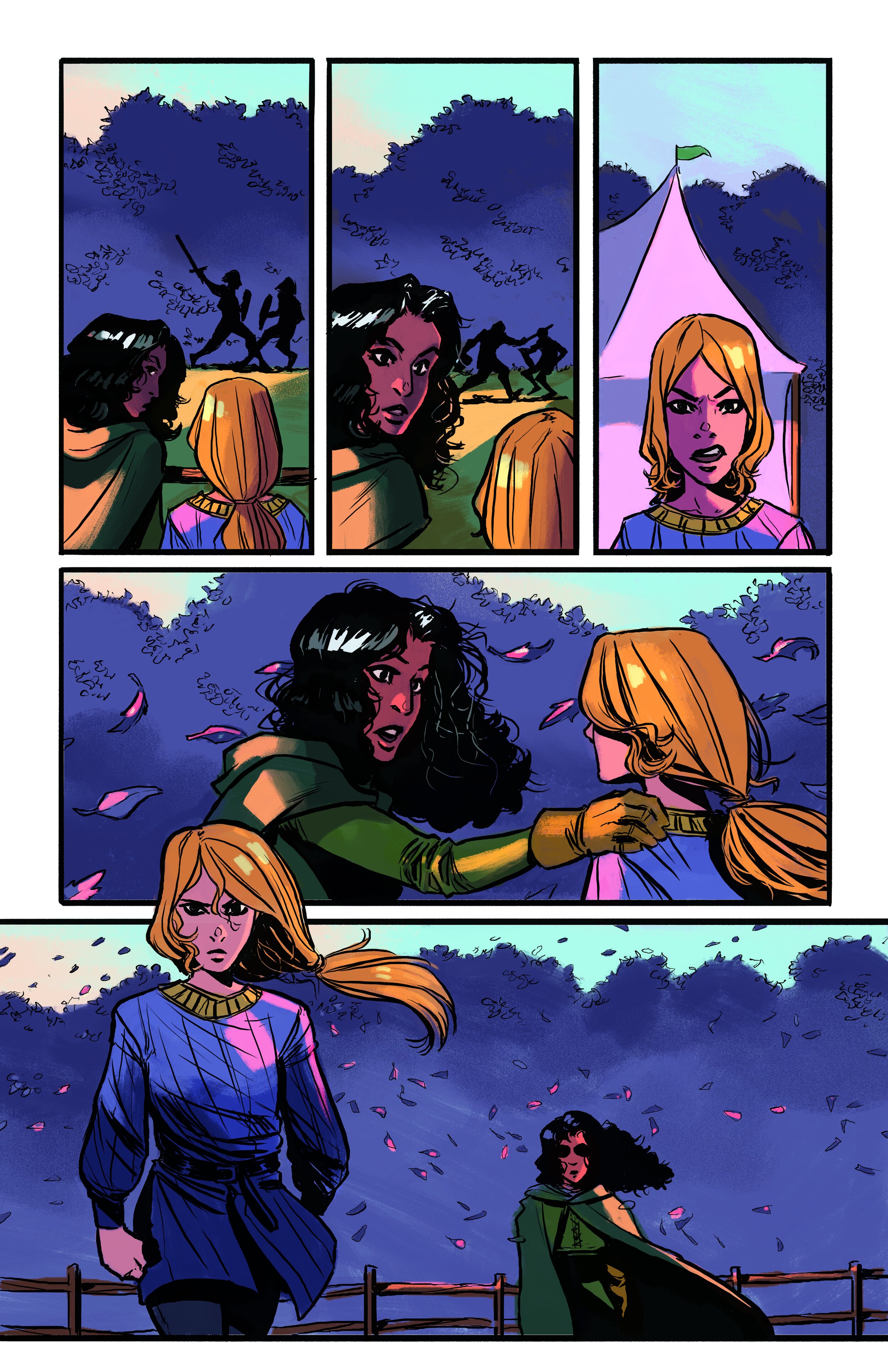 I also have to thank Simon David and Adam Gorham, our exceptional cover-artists. Simon did work for us on Tide of Blood (the iconic Skull, and, perhaps my fave of all time, the bloody Prospero emerging from a book), and being able to hand him all four covers was a dream. He churned out four more brilliant covers -- including what be my NEW favourite, his chilling take on Issue #4...
I also have to thank Simon David and Adam Gorham, our exceptional cover-artists. Simon did work for us on Tide of Blood (the iconic Skull, and, perhaps my fave of all time, the bloody Prospero emerging from a book), and being able to hand him all four covers was a dream. He churned out four more brilliant covers -- including what be my NEW favourite, his chilling take on Issue #4...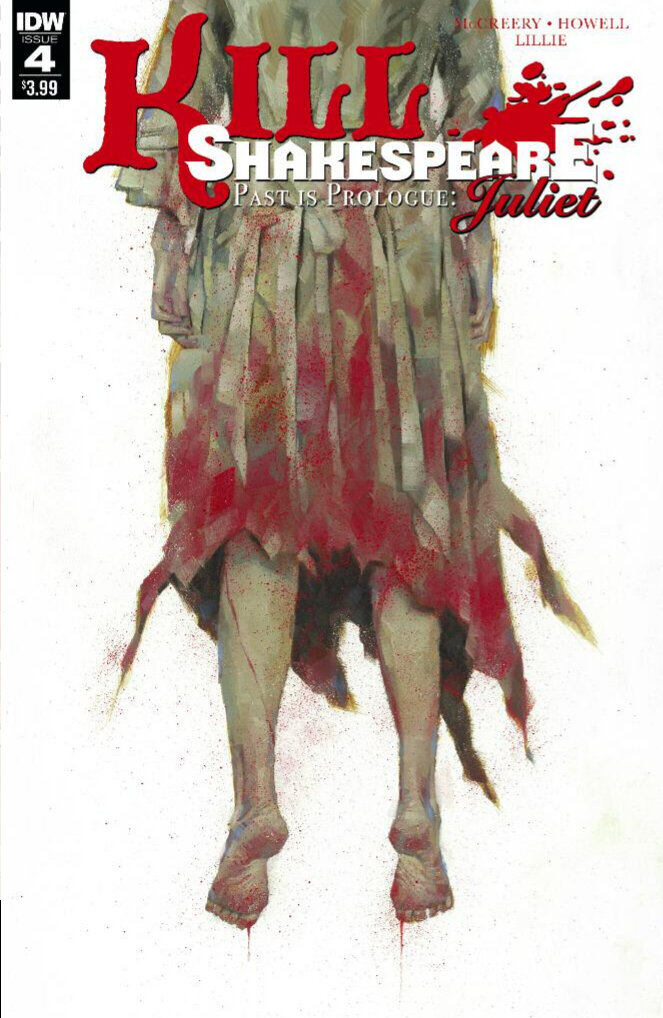 Adam is also SORT of new to the KS family. Those with keen eyes will have spotted his work here and there before, but this was the first time we could get him for a full run, and he did not disappoint. His issue #1 cover is one of the best things I think he's ever done. It kills me that we can only have one cover for the trade... because there is so much good stuff in here.
Adam is also SORT of new to the KS family. Those with keen eyes will have spotted his work here and there before, but this was the first time we could get him for a full run, and he did not disappoint. His issue #1 cover is one of the best things I think he's ever done. It kills me that we can only have one cover for the trade... because there is so much good stuff in here. Toby Malone has a credit you don't see a ton in comics -- Story Editor, but he was invaluable in shaping the tale. His knowledge of Shakespeare is peerless, and there is more than one reference to the Bard that originated in his nimble brain. He also constantly had me thinking about how to best deliver the story concisely and with maximum emotion. He's a real talent - and any writer would do well to work with him.I also HAVE to thank the team at IDW -- Tom Waltz our fearless editor, who helped keep us on track story-wise, and was there when I was freaking out when we lost Shari, Corin had to go to be by her Father's side, and the roof of my house threatened to collapse. When I found out we weren't getting Chris Mowry, the letterer for the first four KS volumes, I'll admit, I was nervous. Shawn Lee took those nerves, made them a cup of tea, and tucked'em in with a good book. Shawn's lettering is instinctive, insightful, and never ever obscures the artist's work. That's the true mark of a great letterer -- knowing that the "image is the thing." Shawn, I'm a believer.
Toby Malone has a credit you don't see a ton in comics -- Story Editor, but he was invaluable in shaping the tale. His knowledge of Shakespeare is peerless, and there is more than one reference to the Bard that originated in his nimble brain. He also constantly had me thinking about how to best deliver the story concisely and with maximum emotion. He's a real talent - and any writer would do well to work with him.I also HAVE to thank the team at IDW -- Tom Waltz our fearless editor, who helped keep us on track story-wise, and was there when I was freaking out when we lost Shari, Corin had to go to be by her Father's side, and the roof of my house threatened to collapse. When I found out we weren't getting Chris Mowry, the letterer for the first four KS volumes, I'll admit, I was nervous. Shawn Lee took those nerves, made them a cup of tea, and tucked'em in with a good book. Shawn's lettering is instinctive, insightful, and never ever obscures the artist's work. That's the true mark of a great letterer -- knowing that the "image is the thing." Shawn, I'm a believer.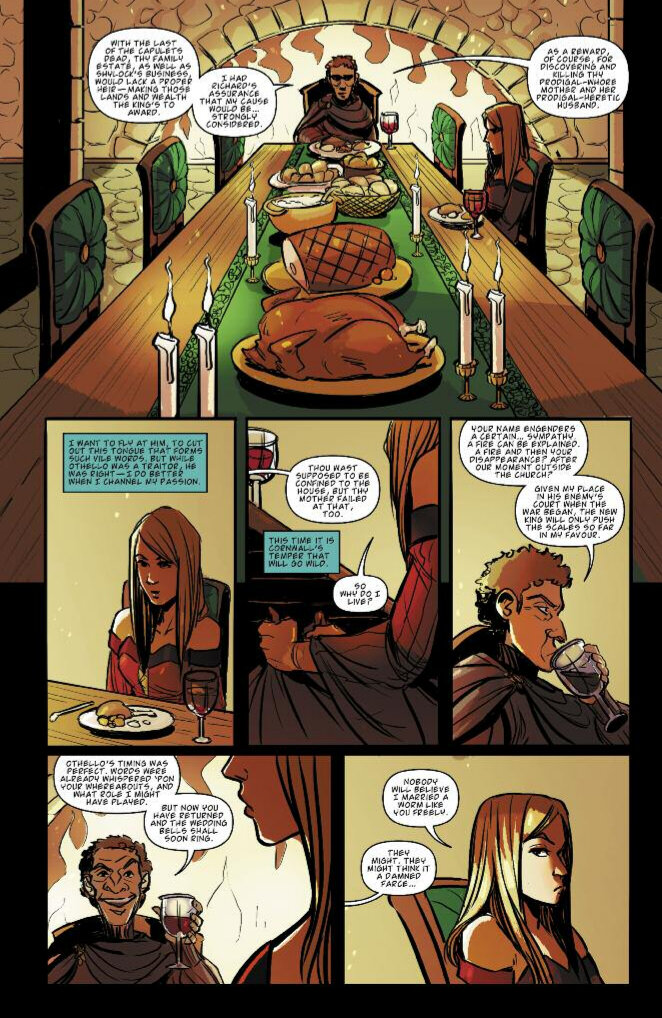 Last, but not least, I need to thank my partner in crime - Anthony Del Col. We started committing Bardicde way back in 2008, and now almost a decade later we're still going strong (or at least WE think so). I'm so grateful that Anthony was willing to give me a chance to take KS in this direction. It would have been easy for him to have felt threatened, or wanted to control things, but that's not the kind of guy he is. All he cares about is good story, and once we figured out what THIS ONE was, he supported me whole-heartedly (The "Cassio" twist is a direct result of Anthony challenging me to take the story to a better place.)Thanks Anthony. I'm blessed to get to tell stories with you.
Last, but not least, I need to thank my partner in crime - Anthony Del Col. We started committing Bardicde way back in 2008, and now almost a decade later we're still going strong (or at least WE think so). I'm so grateful that Anthony was willing to give me a chance to take KS in this direction. It would have been easy for him to have felt threatened, or wanted to control things, but that's not the kind of guy he is. All he cares about is good story, and once we figured out what THIS ONE was, he supported me whole-heartedly (The "Cassio" twist is a direct result of Anthony challenging me to take the story to a better place.)Thanks Anthony. I'm blessed to get to tell stories with you. Actually, the REAL last but not list are you, the readers. When we first dreamed-up Kill Shakespeare we had no idea if we could find an audience or not, and then you came into our lives. We're on the seventh printing of Volume 1, we've been able to take our little baby from the page to the stage, to the board (game), and now to TV. Without you folks reading, commenting, challenging us, we would never have come even half this far. I hope you find Juliet an excellent addition to the canon. At the end of the day we're here to serve you.
Actually, the REAL last but not list are you, the readers. When we first dreamed-up Kill Shakespeare we had no idea if we could find an audience or not, and then you came into our lives. We're on the seventh printing of Volume 1, we've been able to take our little baby from the page to the stage, to the board (game), and now to TV. Without you folks reading, commenting, challenging us, we would never have come even half this far. I hope you find Juliet an excellent addition to the canon. At the end of the day we're here to serve you.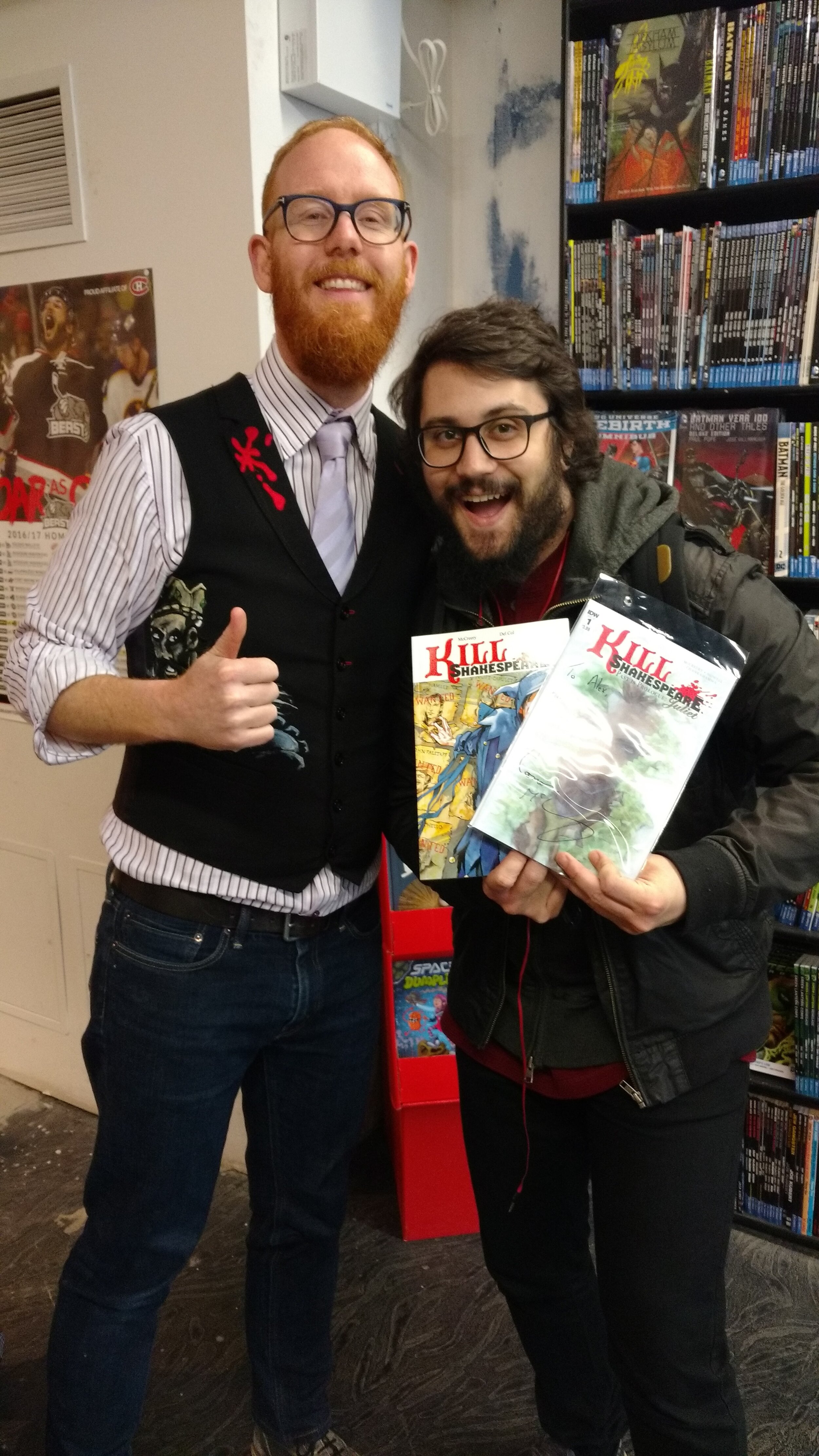
 Lots of love,Conor
Lots of love,Conor
Issue #3 is FINALLY here -- it got a little Shakespearean there for a second.
Hey everyone,Today is a bittersweet day for the Kill Shakespeare team. On one hand we're thrilled that issue #3 of Juliet is out. We think it's the best issue of the series - a giant sized 28 pages of story that we hope feels as Shakespearean as anything we've ever done. Corin Howell's art has hit another level for this one, and I think it's one of the best issues I've ever written.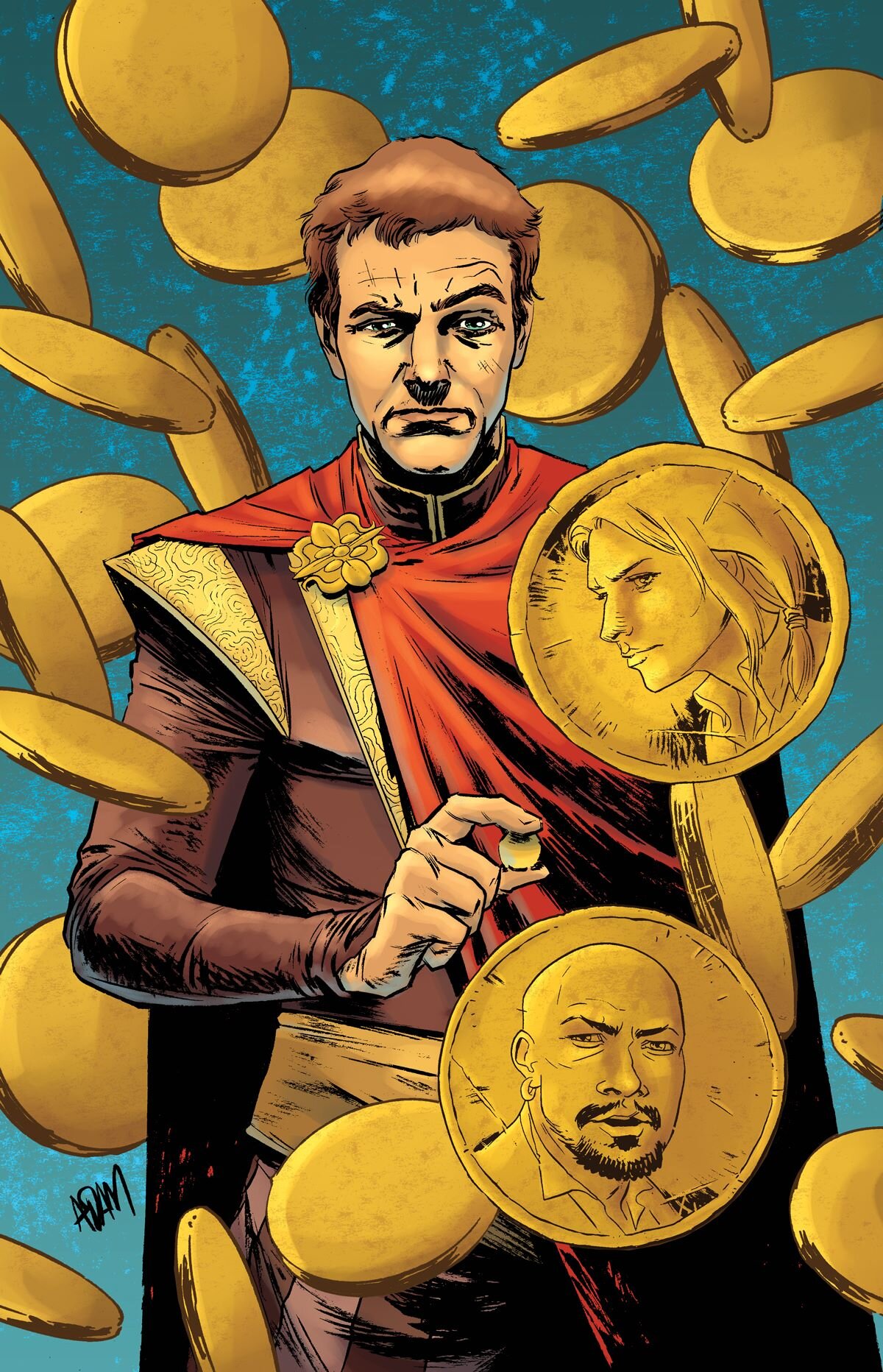 You may have noticed, however, that there's been a delay in getting this issue out -- originally #3 was supposed to be out LAST month and #4 was supposed to hit stores now.That's the bittersweet part. You see, it's been fairly Shakespearean behind the scenes here in the ol' KS world. Corin's Dad got sick early this year. He had to go into the hospital for surgery a couple of times. Thankfully he's going to be o.k., and we're so happy about that, but as you can imagine helping to take care of her family was Corin's top priority, and so that meant the book had to come second. Which is the right choice.For those of you who have the book you MAY have noticed that the colours seem a bit different. Well, that's part of the drama too...The OTHER bittersweet moment came because we had to say adieu to long-time colourist Shari Chankahamma. Shari whose been with us since Book 3 was offered an amazing opportunity to pencil and ink a project and there was no way we were going to stand in her way. That DID result in a delay though as we found a new colourist who could fit into Shari's style.Enter Alex Lille, our saviour (and big thanks to Keith Morris for helping us find her!)
You may have noticed, however, that there's been a delay in getting this issue out -- originally #3 was supposed to be out LAST month and #4 was supposed to hit stores now.That's the bittersweet part. You see, it's been fairly Shakespearean behind the scenes here in the ol' KS world. Corin's Dad got sick early this year. He had to go into the hospital for surgery a couple of times. Thankfully he's going to be o.k., and we're so happy about that, but as you can imagine helping to take care of her family was Corin's top priority, and so that meant the book had to come second. Which is the right choice.For those of you who have the book you MAY have noticed that the colours seem a bit different. Well, that's part of the drama too...The OTHER bittersweet moment came because we had to say adieu to long-time colourist Shari Chankahamma. Shari whose been with us since Book 3 was offered an amazing opportunity to pencil and ink a project and there was no way we were going to stand in her way. That DID result in a delay though as we found a new colourist who could fit into Shari's style.Enter Alex Lille, our saviour (and big thanks to Keith Morris for helping us find her!)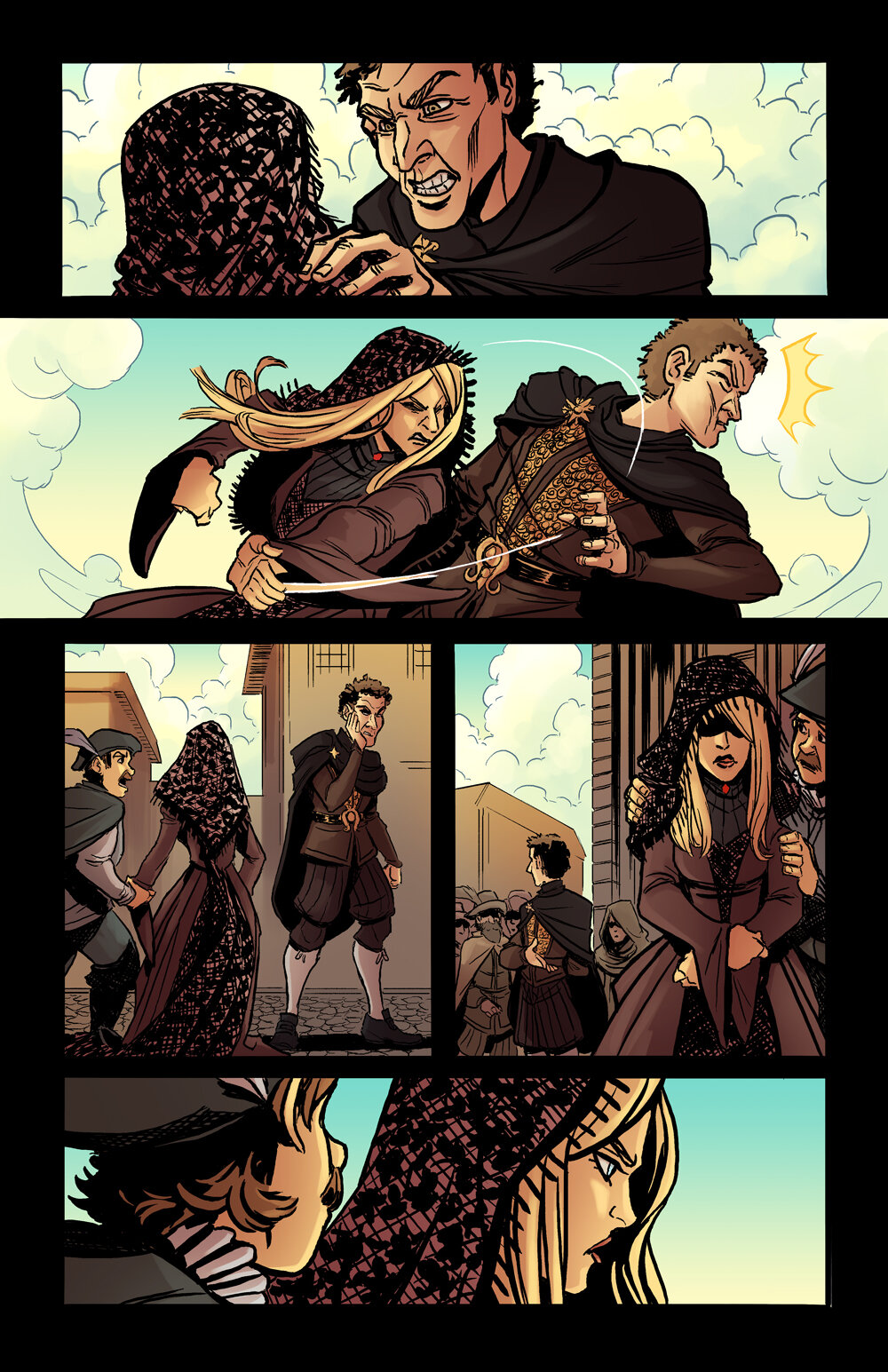
 This is Alex's first crack at a regular series, and she's still finishing up her degree in SoCal, so we decided that rather than rush her, it was best to take our time and make this book look as good as possible. All that add's up to a longer production cycle than we were hoping for, and it means that issue #4 is also going to be delayed -- with it looking to come out in August (it's almost finished on our end.)So, our apologies for the delay, but I hope you'll all understand the reasons behind it.Thanks to all of you.C
This is Alex's first crack at a regular series, and she's still finishing up her degree in SoCal, so we decided that rather than rush her, it was best to take our time and make this book look as good as possible. All that add's up to a longer production cycle than we were hoping for, and it means that issue #4 is also going to be delayed -- with it looking to come out in August (it's almost finished on our end.)So, our apologies for the delay, but I hope you'll all understand the reasons behind it.Thanks to all of you.C
CAPTION CONTEST
It's contest time!With Kill Shakespeare - Past is Prologue: Juliet #1 just a week away (WEDNESDAY, APRIL 5th), it's time to do some fun things to get us all ready for the latest chapter in our tale. Below is a panel from issue #1 of Juliet.Send us your best caption for it and the winner will receive a Kill Shakespeare prize-pack including books, t-shirts and more!  For those of you not familiar with Juliet it takes place roughly five months after the end of Romeo & Juliet, where our heroine, still mourning the death of her beloved Romeo again comes face to face with death. This time the victim is her mother, and this time Juliet has reason to suspect it was not suicide, but a murder most foul. Now the headstrong and passionate young woman will be plunged into a world of rebels, mercenaries, and wise fools as she tries to bring her Mother's killer -- before Juliet herself is the next victim.It's the perfect place for a new reader to jump into the Kill Shakespeare Universe, and for you, our dedicated fans, it answers some of the questions we get the most: how did a girl, best known for being a star-cross'd lover come to lead a rebellion?As the Bard himself wrote "...be not afraid of greatness."All the best,Conor
For those of you not familiar with Juliet it takes place roughly five months after the end of Romeo & Juliet, where our heroine, still mourning the death of her beloved Romeo again comes face to face with death. This time the victim is her mother, and this time Juliet has reason to suspect it was not suicide, but a murder most foul. Now the headstrong and passionate young woman will be plunged into a world of rebels, mercenaries, and wise fools as she tries to bring her Mother's killer -- before Juliet herself is the next victim.It's the perfect place for a new reader to jump into the Kill Shakespeare Universe, and for you, our dedicated fans, it answers some of the questions we get the most: how did a girl, best known for being a star-cross'd lover come to lead a rebellion?As the Bard himself wrote "...be not afraid of greatness."All the best,Conor
Sneak Peek at NEW PAGES!
As some of you have seen, Kill Shakespeare is coming back to the page.We're working on our fifth book, "Juliet" which is going to take a step back from the main story to show you how Juliet started on the path towards becoming Prodigal leader. Set just a a few months after the end of Romeo and Juliet, we pick up our heroine as an angry young woman, who still feels guilt over Romeo's death, and isn't sure that she deserved to have survived. A horrific murder will give Juliet a cause, bloody vengeance, and pit her against one of Shakespeare's nastiest villains, Cornwall from King Lear. Can Juliet get revenge? And will she lose herself in the process?Unfortunately for us, the uber-talented Andy Belanger can't join us this time out, so instead we have tapped the ALSO uber-talented Corin Howell! She's best known for her work with BOOM! (Power Rangers), Viz Media (Bravest Warriors), Oni (The Mighty Zodiac) and IDW (Transformers), and now we've got her doing pencils and inks for our baby!Vaneda Vireak, whose work featured in the back-up story for The Mask Of Night is on-board to colour the book and we could not be happier with their work.Ah heck, why don't we stop gushing and SHOW you?Below are some pencils from the first chapter of the series - we'd love to hear your thoughts on this new comic-adventure!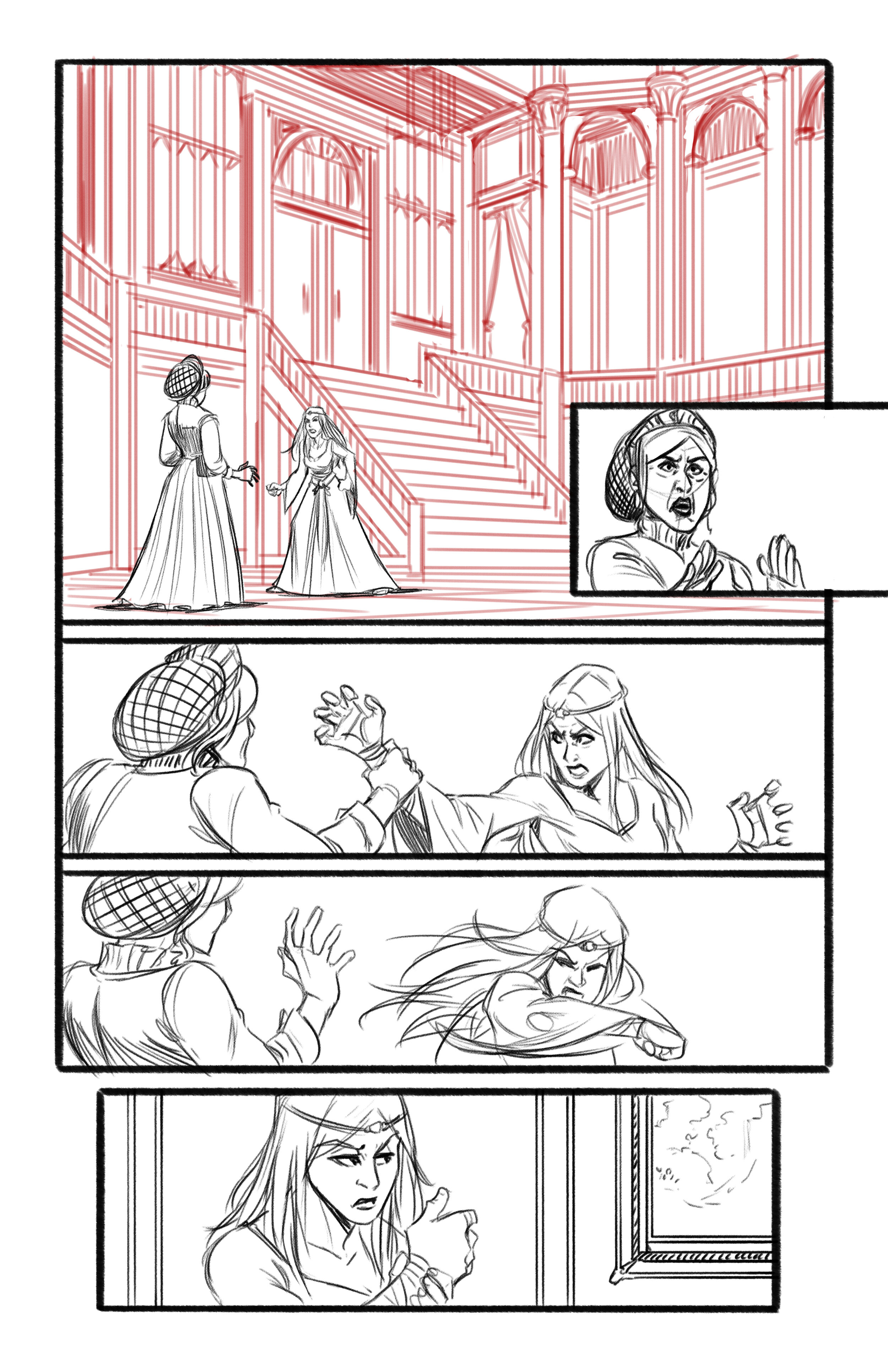

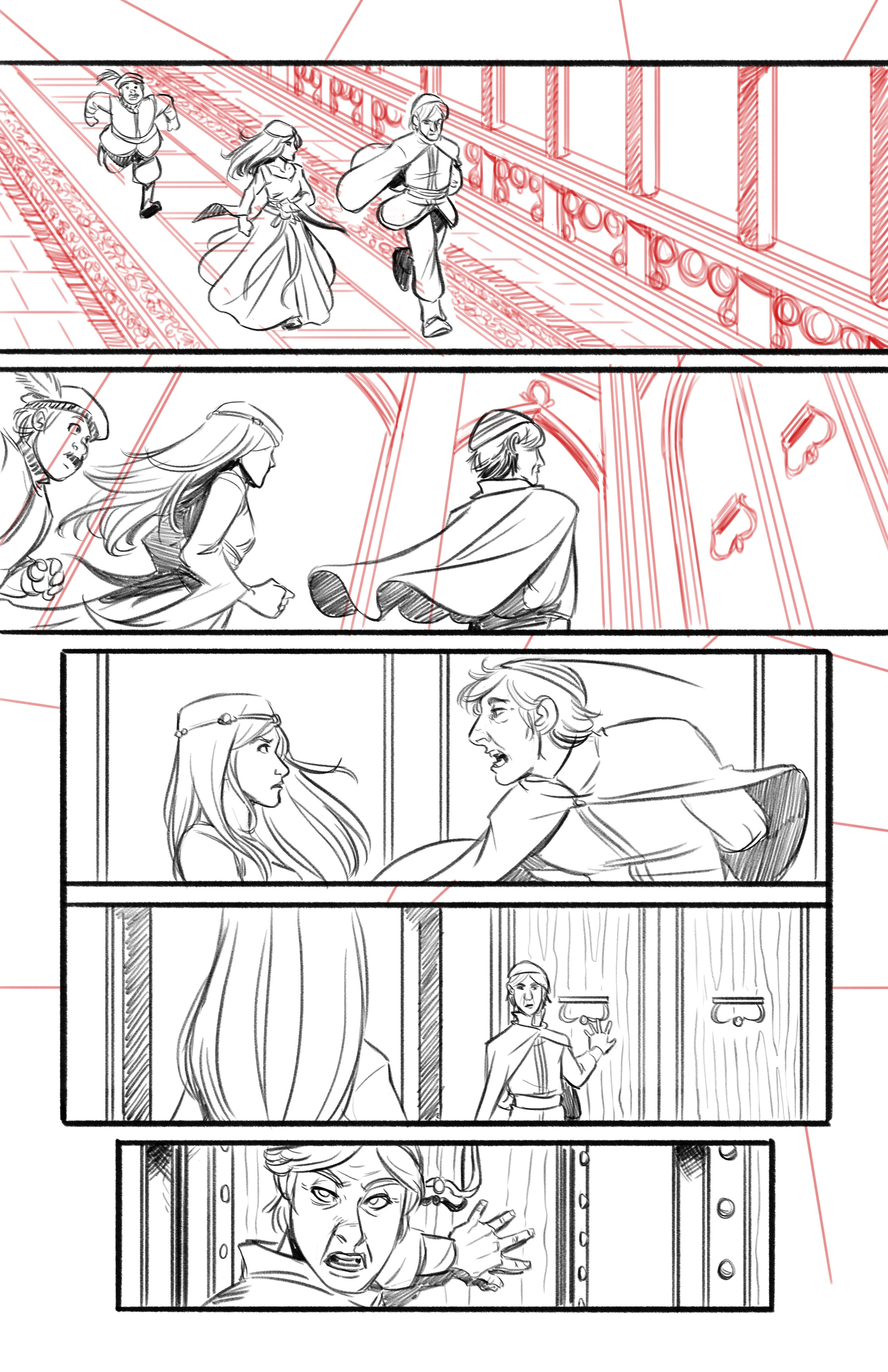
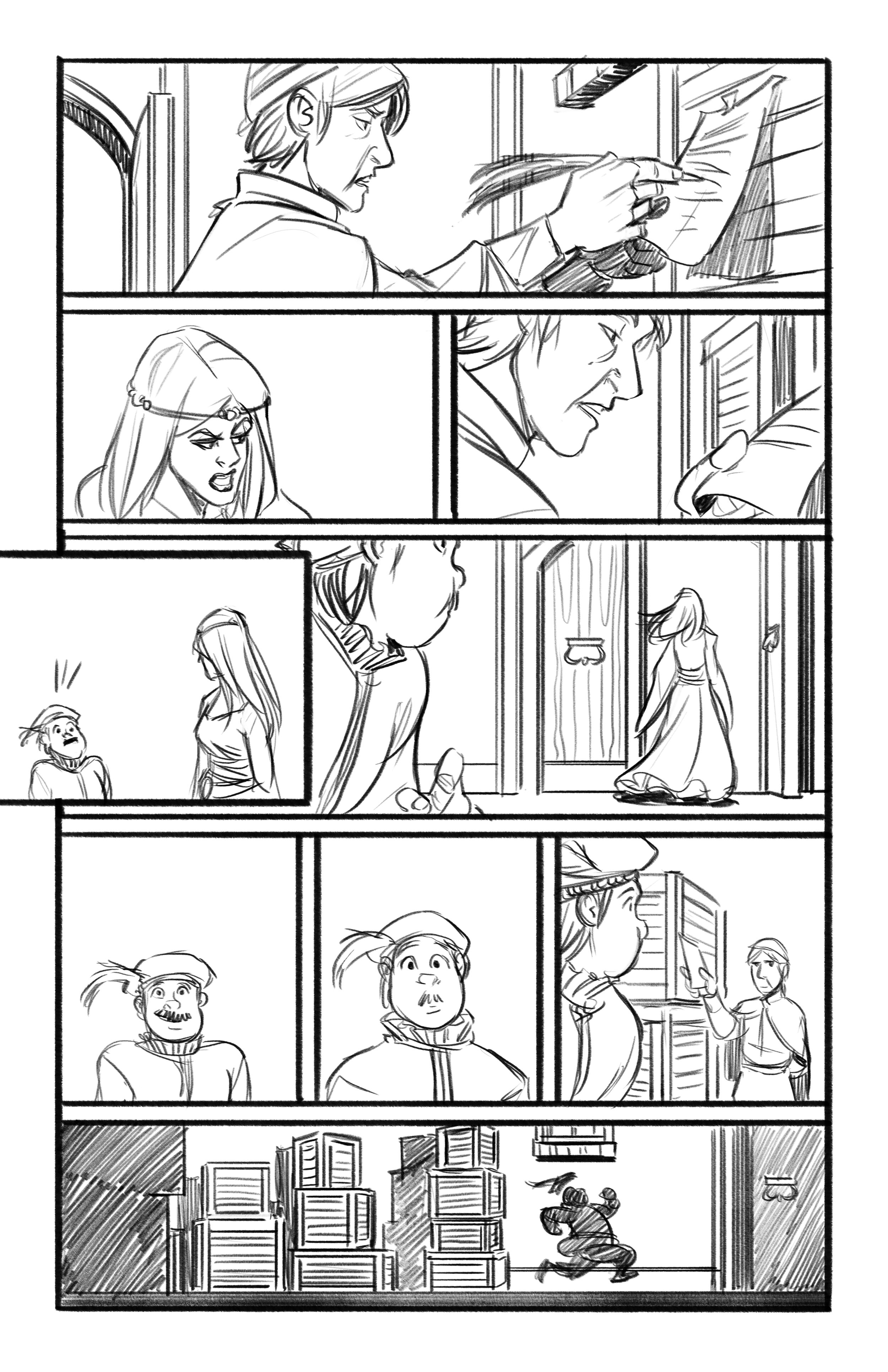
Issue #4 Cover Art - Enter Juliet. Enter Othello.
We are a week away from the release of Kill Shakespeare #4 (release date is Wednesday, August 4th) and we are excited to see what the reaction of readers will be to our interpretation of Juliet. She makes a great appearance in this issue - as does Othello. This issue is filled to the brim with action, action, action.Here is the great cover art by Kagan McLeod.

